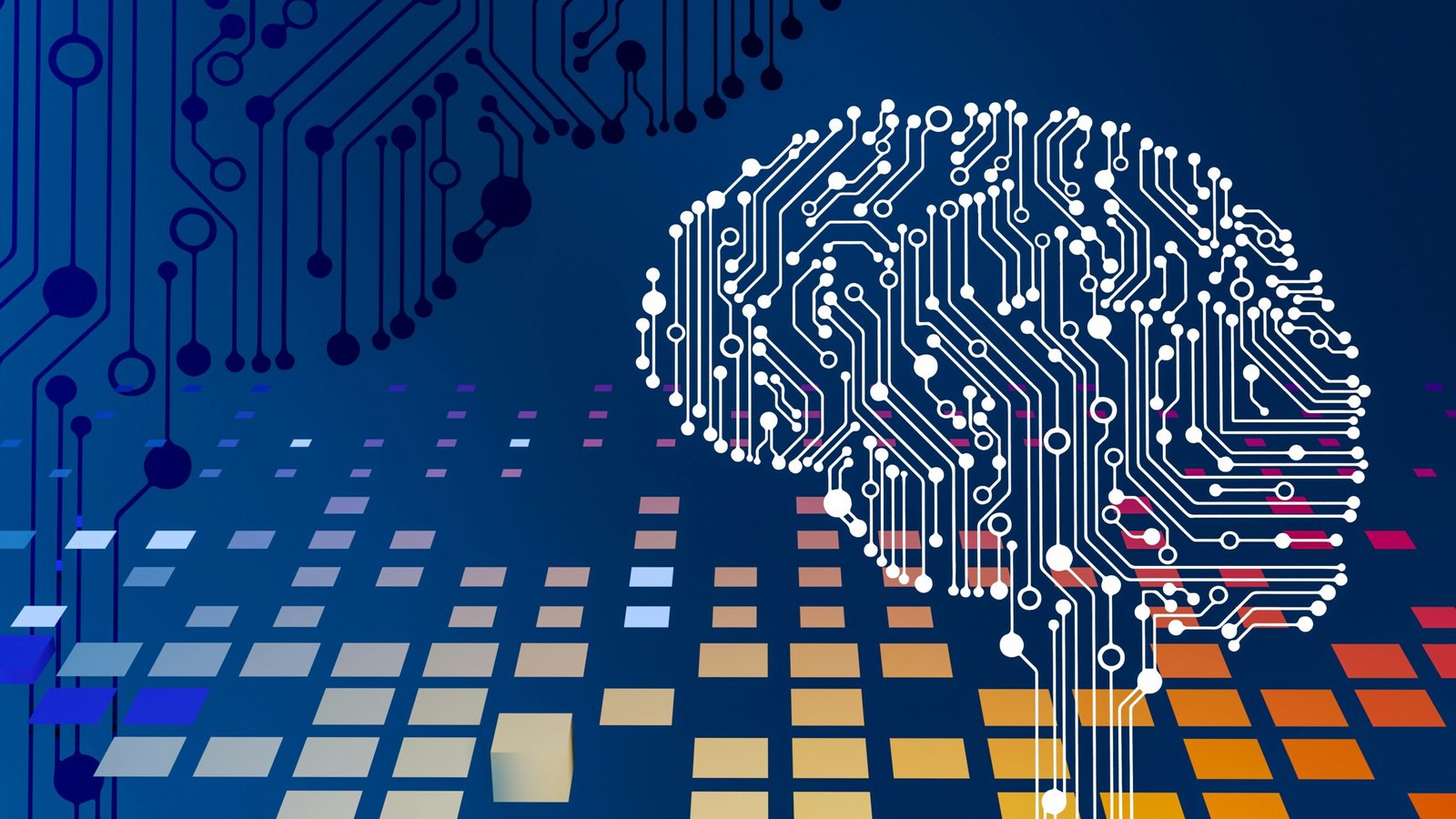Introduction to Artificial Intelligence
Artificial Intelligence (AI) encompasses a broad range of technologies capable of performing tasks that traditionally require human intelligence. These include problem-solving, learning, reasoning, perception, and language understanding. The concept of AI emerged in the mid-20th century, rooted in the desire to create machines that could mimic human cognitive processes. Its early foundations were laid during the 1950s and 1960s, a period characterized by significant theoretical advancements and the establishment of key principles in computer science.
The term “artificial intelligence” was officially coined in 1956 during the Dartmouth Conference, which is regarded as the birth of AI as a field of research. Researchers such as John McCarthy, Marvin Minsky, Allen Newell, and Herbert A. Simon sought to develop algorithms capable of solving complex problems, laying the groundwork for future innovations. The early optimism in AI research led to the creation of programs that could play games like chess and solve mathematical problems, demonstrating the potential of machines to perform tasks that were previously unimaginable.
In the following decades, the development of AI experienced several cycles of excitement and disappointment, often termed “AI winters,” where progress slowed due to limited computing power and inadequate algorithms. However, the resurgence of interest in AI occurred in the 21st century, fueled by advances in machine learning, big data, and computational power. Breakthroughs such as deep learning have enabled machines to analyze vast datasets, leading to significant improvements in tasks like image and speech recognition.
Today, artificial intelligence is more integrated into our daily lives than ever before, influencing diverse sectors ranging from healthcare and finance to transportation and entertainment. Understanding the historical evolution of AI is crucial to appreciate its transformative potential and the ongoing advancements that continue to shape our society.
The Mechanisms of AI: How It Works
Artificial Intelligence (AI) encompasses a broad spectrum of technologies and methodologies that empower machines to imitate human-like intelligence. One of the core components of AI is machine learning, a subset that enables systems to learn from data. By employing algorithms that identify patterns, machines can adjust their responses based on new information. For instance, machine learning can be applied in various sectors, ranging from healthcare, where it aids in diagnostics, to finance, where it supports fraud detection.
Deep learning, a specialized form of machine learning, operates through the use of artificial neural networks. These networks consist of multiple layers of interconnected nodes, mimicking the functioning of biological neurons in the human brain. As data passes through these layers, the neural network processes and transforms it, facilitating the identification of complex patterns. This deep learning approach has significantly advanced fields such as image recognition and speech processing, enabling machines to interpret and analyze vast amounts of visual and auditory data.
Natural language processing (NLP) represents another pivotal aspect of AI. It empowers machines to understand, interpret, and generate human language. NLP integrates techniques from linguistics and machine learning to drive applications like chatbots, language translation services, and sentiment analysis tools. Through NLP, AI can analyze text and derive meaning, making human-computer interaction more intuitive and accessible.
These individual components—machine learning, deep learning, and natural language processing—work cohesively, allowing AI to undertake tasks that would typically necessitate human intelligence. By combining these technologies, AI systems can analyze data, make predictions, and even engage in creative processes. As we continue to explore the capacities of AI, understanding these underlying mechanisms will enhance our appreciation of the technology’s potential and its implications for various industries.
The Emergence of AI in Everyday Life
The integration of artificial intelligence (AI) into daily life has become increasingly notable, transforming the manner in which individuals interact with technology and with each other. Virtual assistants, such as Siri and Alexa, have emerged as prominent examples of how AI facilitates everyday tasks by providing users with hands-free access to information, controlling smart home devices, and even managing schedules. These AI-driven tools enhance productivity, allowing individuals to perform functions like setting reminders or playing music without needing to manually engage with their devices.
Another significant area of AI application is in personalized recommendations. Platforms like Netflix and Spotify utilize complex algorithms to analyze user preferences and behavior patterns, delivering tailored content suggestions that enrich entertainment experiences. Similarly, e-commerce websites employ AI to assess shopping habits, subsequently offering customized product recommendations which not only heighten consumer satisfaction but also drive sales through improved customer engagement.
Despite these benefits, the pervasive nature of AI technology raises important considerations regarding privacy and security. As AI systems collect vast amounts of personal data to enhance user experiences, concerns about data misuse and unauthorized access become increasingly relevant. Moreover, reliance on AI systems can lead to a reduction in critical thinking and decision-making skills, as individuals may become accustomed to depending on technology for mundane tasks.
Moreover, the proliferation of AI in everyday life can have implications for job displacement, as automation becomes capable of performing tasks traditionally carried out by humans. As industries adapt to AI advancements, the workforce may need to navigate the challenges associated with evolving job roles and the need for new skill sets.
In conclusion, while artificial intelligence has undeniably transformed daily life through its numerous applications, it is essential to consider the balance between its benefits and the potential drawbacks associated with its widespread adoption.
AI vs. Human Power: A Comparative Analysis
The rapid advancement of artificial intelligence (AI) has prompted a thorough examination of its capabilities in comparison to those of human intelligence. In several domains, AI far exceeds human abilities, particularly in data processing speed and accuracy. For instance, AI systems can analyze vast datasets in a fraction of the time it would take a human, identifying patterns and making predictions with remarkable precision. This efficiency is particularly evident in fields such as finance, healthcare, and logistics, where the ability to process complex information quickly can lead to better decision-making and enhanced outcomes.
Moreover, AI technology can operate continuously without fatigue or the need for breaks, further amplifying its effectiveness in tasks that require sustained attention and focus. Such advantages make AI an invaluable asset in industries aiming to boost productivity and enhance operational efficiency. However, this does not negate the unique strengths inherent in human intelligence.
Humans possess an innate ability for creativity, critical thinking, and emotional insight—qualities that AI, despite its sophisticated algorithms, struggles to replicate. Human intelligence is marked by the capacity for abstract thought and the ability to draw upon emotional experiences, leading to innovations and empathetic interactions that machines cannot yet match. Furthermore, the social context in which decisions are made is often nuanced and complex, requiring a level of understanding that AI currently lacks. Insights that stem from human emotional intelligence allow for deeper connections and relational dynamics, making humans irreplaceable in many roles involving interpersonal relations.
Overall, while AI challenges and often outstrips human capabilities in data-heavy tasks, the irreplaceable attributes of human intelligence highlight a complementary relationship rather than a competitive one. As we navigate this new era of AI, acknowledging both the strengths and limitations of each will be essential in maximizing their potential together.
Ethical Considerations in AI Development
The advancement of artificial intelligence (AI) technologies has prompted discussions centered around the ethical considerations that developers and companies must navigate. One prominent concern is job displacement. As AI systems become increasingly capable of performing tasks traditionally undertaken by humans, there is anxiety over the potential loss of employment opportunities. The automation of various industries raises questions about the long-term implications for the workforce, particularly in sectors where manual labor is prevalent. It is essential for stakeholders in technology and labor sectors to collaborate in crafting strategies that manage these transitions responsibly.
Privacy issues also reside at the forefront of ethical discussions involving AI. With the proliferation of data collection and surveillance technologies powered by AI, individuals’ privacy rights may be compromised. As machines learn from vast amounts of data, often containing sensitive personal information, the risk of misuse looms large. Developers must establish robust protocols to safeguard user data and implement transparency in how data is utilized. This will foster trust and hold companies accountable for ethical practices regarding privacy rights.
Moreover, the potential for bias in AI systems has emerged as a pressing ethical issue. AI technologies rely on data to make decisions and predictions; if such datasets harbor bias, the algorithms trained on them can perpetuate and even exacerbate existing inequalities. The moral responsibilities of developers extend to ensuring that AI systems are designed to be fair and equitable. This includes scrutinizing the data sources and employing diverse teams during the development process to mitigate the impact of unconscious biases.
In the rapidly evolving landscape of artificial intelligence, ethical considerations should remain a priority. Collective efforts to address these issues can help ensure that AI technologies contribute positively to society, reflecting a commitment to responsible development and application.
The Future of Work in an AI-Dominated World
The advent of artificial intelligence (AI) is poised to transform the job market in unprecedented ways. As AI technologies continue to evolve, the integration of automation and machine learning into various sectors is likely to redefine the traditional landscape of work. Emerging job categories will likely arise, encompassing roles that complement AI systems rather than compete with them. For instance, positions such as AI ethicists, AI trainers, and data interpreters are expected to gain prominence, focusing on the ethical considerations and operational proficiency required to harness AI’s full potential.
Moreover, the rapid advancement of AI highlights the necessity for upskilling within the workforce. Employees will need to cultivate new competencies to adapt to changes brought by AI integration, ensuring they remain relevant in an increasingly automated environment. Upskilling initiatives, such as training programs and workshops, will be vital for individuals seeking to thrive in the job market. By fostering a culture of continuous learning, organizations can better prepare their employees for the future, enabling them to navigate the complexities of AI-driven tasks confidently.
Human-AI collaboration will be central to fostering a sustainable future of work. Rather than viewing AI as a replacement for human labor, it can be perceived as a tool that enhances productivity and innovation. Industry experts contend that the synergistic relationship between human intelligence and artificial intelligence will lead to enhanced problem-solving capabilities and improved operational efficiency. In particular, sectors such as healthcare, finance, and manufacturing stand to benefit significantly from this collaboration, as AI can process vast amounts of data and assist in decision-making, while humans provide the critical creativity and emotional intelligence that AI cannot replicate.
Ultimately, the successful navigation of this new era will depend on our ability to adapt to changing circumstances while leveraging the distinct advantages of both human and artificial intelligence. The future of work promises to be an exciting landscape shaped by innovation and collaboration.
AI in Healthcare: Revolutionizing Patient Care
Artificial Intelligence (AI) is fundamentally reshaping the healthcare landscape, enhancing the ways in which clinicians diagnose and treat conditions, thereby significantly improving patient care. By harnessing advanced algorithms and machine learning techniques, AI systems analyze vast quantities of healthcare data, identifying patterns that might be undetectable to human providers. This capability is particularly evident in fields such as radiology, pathology, and genomics, where AI applications assist in diagnosing diseases more accurately and expediently.
One notable example involves the use of AI in radiology, where tools like Google’s DeepMind have demonstrated exceptional proficiency in interpreting medical images. In various studies, AI systems outperformed human radiologists in detecting certain types of cancers, highlighting the potential for these technologies to reduce diagnosis errors and streamline the detection process. Similarly, AI-driven applications, such as IBM Watson, are being utilized to develop personalized treatment plans by analyzing patient histories alongside scholarly articles and clinical findings.
Despite these advancements, the integration of AI in healthcare is not without its challenges. Healthcare professionals must grapple with concerns related to data privacy and security, ensuring that patient information is well-protected amidst the deployment of AI systems. Additionally, there is a crucial need for healthcare providers to adapt to new technologies and workflows, which may necessitate significant changes to existing practices. This transition requires comprehensive training and an openness to change among medical staff, which can be a considerable hurdle in the adoption of AI technologies in healthcare settings.
In conclusion, while AI presents remarkable opportunities for enhancing patient care through improved diagnostics and treatment plans, the healthcare sector must address potential challenges to realize its full benefits. By fostering collaboration between healthcare professionals and AI technologies, a new paradigm in patient care may emerge, characterized by enhanced outcomes and efficiency.
AI in Creative Industries: Shifting Paradigms
The integration of artificial intelligence (AI) into creative industries such as music, visual arts, and literature is transforming traditional paradigms of creation and authorship. With the advent of sophisticated algorithms and machine learning capabilities, AI is not only functioning as a tool for artists but also as a co-creator in the artistic process. This shift raises fundamental questions about the nature of creativity itself and the role of human artists in an increasingly automated landscape.
In the realm of music, AI has demonstrated its ability to analyze existing compositions and generate new pieces across various genres. For instance, platforms powered by AI can produce original melodies that mimic the styles of established composers or create completely new sounds. These innovations challenge our understanding of original works and invite debate on intellectual property rights, as the lines blur between human- and machine-generated creations.
Similarly, in visual arts, AI algorithms can create paintings or digital artworks that evoke emotions and convey meaning, leading to a reconsideration of authorship. Projects like DALL-E and DeepArt showcase artworks generated by AI trained on extensive datasets of existing art. This phenomenon prompts artists to reflect on their unique perspectives and the essence of human expression. The debate extends to the ethics of AI in artistic endeavors, where questions arise about the legitimacy of AI-generated pieces in galleries and exhibitions.
Literature also embraces AI’s capabilities, with tools that assist writers in generating story ideas, creating characters, or even drafting complete novels. While some view this as a threat to traditional writing, others see it as an opportunity to enhance the creative process. The collaborative potential between human authors and AI can lead to new storytelling methods that push the boundaries of narrative form and content.
Overall, the influence of AI in creative industries redefines notions of talent, creativity, and authorship, sparking both excitement and concern as we navigate this new era of artistic collaboration.
Conclusion: Embracing the AI Revolution
The rapid advancement of artificial intelligence marks a transformative epoch in human history, where the potential of AI extends beyond mere technological innovation to reshape societal structures and individual lives. Recognizing the significance of this emergence is crucial, as the integration of AI systems in various sectors has far-reaching implications. From healthcare to finance, education to transportation, AI’s capabilities are enhancing efficiencies, offering sophisticated solutions to complex problems, and creating opportunities previously deemed unattainable.
As we delve into the complexities brought by the rise of artificial intelligence, it becomes evident that understanding the underlying principles of AI technology is imperative. This knowledge not only aids in appreciating the benefits AI can offer but also equips individuals and organizations to address the challenges posed by automation and job displacement. Embracing this transformation necessitates a proactive approach towards adaptability, fostering a culture of continuous learning, and developing strategies to leverage AI’s strengths while mitigating its risks.
Engagement in discussions surrounding technology’s evolving role in society is equally important. Stakeholders, including policymakers, developers, and the public, must collaborate to navigate the ethical considerations and establish guidelines that govern AI deployment. These conversations will shape the societal framework within which AI operates, ensuring that its emergence is aligned with the collective good rather than solely serving corporate interests. Thus, fostering an informed dialogue around the integration of intelligence will enable all members of society to contribute to a balanced approach in the AI revolution.
In conclusion, as we stand on the precipice of an AI-driven future, the importance of understanding and engaging with this new reality cannot be overstated. By remaining informed, adaptable, and committed to lifelong learning, we can embrace the opportunities presented by artificial intelligence while responsibly navigating its challenges. The AI revolution is here; how we choose to respond will define our subsequent trajectory.




